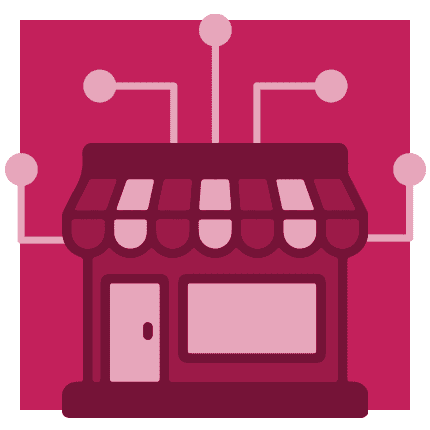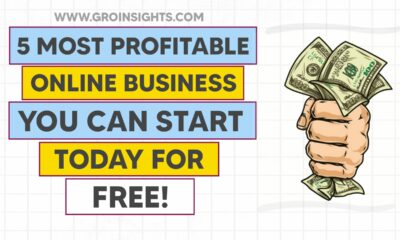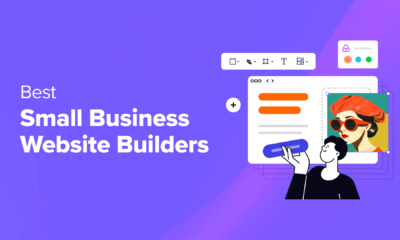PPC
How to Utilize AI in Small Businesses Operations

In general, when you think of “artificial intelligence,” you might think about robots that mimic humans. But AI is much more than just robotics. The common utilization of AI in small businesses and enterprises is widespread in several business operations, including marketing, sales, human resources, logistics, and so on.
And while you may think that advancement in AI is still far away, there are several platforms that are already utilizing it to deliver better results.
So, let’s discuss the most popular ways AI can be utilized by small businesses.
Utilization of AI in Small Businesses: A Guide
Businesses can now utilize all kinds of data sets (such as customer demographics, location, buying patterns, and frequently searched keywords, among others) to help simplify and improve their workflows for:
1. Marketing and Sales
Growing your marketing budget is great, but as a small business owner, you must invest in modern tools and tactics to differentiate yourself from the rest and grow your brand.
The key to success in 2022 lies in bringing AI and ML into the marketing mix.
Here’s how:
Utilization of AI in Email Personalization
Personalizing emails can significantly help increase open and click-through rates. Using AI to create engaging content based on previous customer behavior is one way to accomplish this.
You can personalize email reminders, subject lines, calls-to-action, and product recommendations, and even set up drip campaigns with the utilization of AI.
Dynamic Product Pricing
The utilization of AI to enable dynamic pricing is the latest trend in marketing.
Marketers examine customers’ personal and demand data and inventory discrepancies to determine the individual value proposition a product or service delivers. Using these insights, they decide on the prices.
Uber’s surge pricing is one of the best examples of this approach, where the pricing of the cabs dynamically surges based on demand in a particular region.
Image via Thrillist
Assisting Salespeople
One of the other ways through which small businesses can utilize AI in sales is chatbots. These chatbots can help you engage your website visitors in real-time and help with the lead generation and qualification process.
What’s more?
You can also use chatbots for marketing. They can introduce your visitors to new products or services that you offer and build your brand awareness.
For instance, the online education platform Udacity was able to significantly boost sales by using AI to recognize certain sets of words and customer conversations that led to sales. Salespeople were then advised to use the appropriate dialogues or directions based on the words identified to improve sales.
2. Customer Service
Small businesses around the world are using AI to track leads in their sales pipeline, so they can properly understand their clients, where they come from, and the direct financial impact of certain marketing initiatives.
AI is also a significant contributor to customer service. Here are the most common applications of AI in customer service:
Appointment Scheduling
Many consultants and businesses rely on customer appointments to drive lead generation and sales.
Despite this, many of them neglect to schedule them at the right intervals. This was already a problem before the advent of technologies like AI to assist in scheduling.
With AI, you can automatically schedule appointments with your customers. You can create scheduling rules beforehand too so that the software can learn the best times for scheduling your calls.
Customer Service Personalization
Gone are the markets where offering products/services were enough to earn customers and revenue. It’s 2022, and customers expect brands to understand their needs and offer products and related services accordingly. The experience of buying from the brand matters equally.
Small businesses can use the power of AI to enhance the customer experience. AI-powered software applications are packed with customer information and communication data, which allows them to personalize the customer service experience.
For instance, small businesses can employ an AI-powered chatbot like Tidio to respond to customer queries.

Image via Tidio
The chatbot can utilize the customer’s purchase history and brand communication to keep the interaction personalized with the customer. It can also suggest new products based on their preferences.
To help your team understand how to use these solutions, you could use video-making software to create videos for them that explain the process of using these AI-powered solutions for customer service.
3. Human Resource Procurement
The time HR employees spend screening resumes can be significantly lowered by using AI tools, which allow more focused time for applicants who match the company’s requirements or needs.
AI can be used during the interview phase as well as candidate screening to automate communication with applicants, collect information from references, and evaluate performance tasks.
The following are the most common utilizations of AI in human resources:
Candidate Background Checking
Checking the background of a candidate is tedious and time-consuming, but it’s an important activity to ascertain their qualities.
Using AI, the procedure can be quicker, simpler, and more efficient than the traditional method. AI can also dig deeper into the candidate’s profile to help you discover details that you might not be able to find manually.
Facilitating Internal Hiring
Hiring from within the company saves both time and money.
These employees are already familiar with the company and can start working immediately, saving you the cost of induction. Internal mobility, therefore, is beneficial to businesses, and recruiters are well aware of this fact.
IBM suggests that an AI-driven internal mobility process is the best way to find talented internal candidates, as it uses data, pattern recognition, and natural language processing to collect information about your employees and their roles. This helps it better ascertain who’s the right fit for another role.
Employee Onboarding
With AI becoming mainstream, organizations are using it to reduce the time and resources required to onboard their new employees, even virtually.
Small businesses can use AI-equipped chatbots to answer employees’ questions about the company and guide them through other crucial aspects of the onboarding procedure to help them settle into their jobs more quickly.
4. Logistics and Supply Chain
Thanks to the powerful optimization capabilities AI provides in supply chains, small businesses can achieve precise capacity planning, higher productivity, lower costs, and higher output.
Here are some use cases of AI in the supply chain:
Demand Forecasting
Future demand, market trends, and other supply chain concerns can be better predicted if small businesses utilize AI to predict them.
Even if you’re already predicting them well, AI can help you further refine those predictions.
Improving Supplier Relationships
With AI-enabled supplier relations management software, small businesses can make supplier selection more consistent and efficient by taking into account factors such as pricing, historical purchase history, sustainability, etc.
AI can also be used to assess supplier performance so that you can choose the right one. It’s the key to building a reliable supplier relationship as you’d have found a good supplier thanks to AI.
Wrapping Up – Implementation is the Key
It has never been easier to implement AI and similar technologies in small-mid-sized business setups.
With off-the-shelf AI solutions offered at nominal rates, small businesses can reap the benefit of technology to improve operational efficiency and obtain more business.

















You must be logged in to post a comment Login